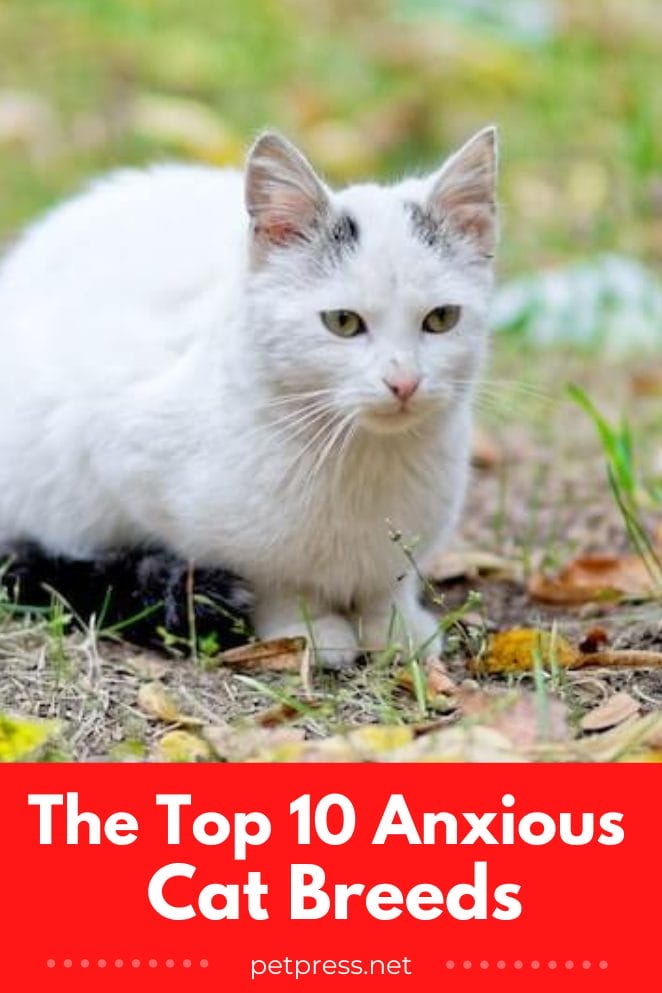
Cats have been known to be anxious creatures since time immemorial.
But some cats are especially anxious, leading owners on a wild ride of scratched furniture and midnight howls.
Fortunately, if you’re looking for an anxious cat breed, you’ve come to the right place! Let’s take a look at some of the most anxious – but oh-so-adorable – breeds out there.
From Abyssinians to Bengals, get ready to learn all about anxious felines from across the globe!
Are some cats just anxious?
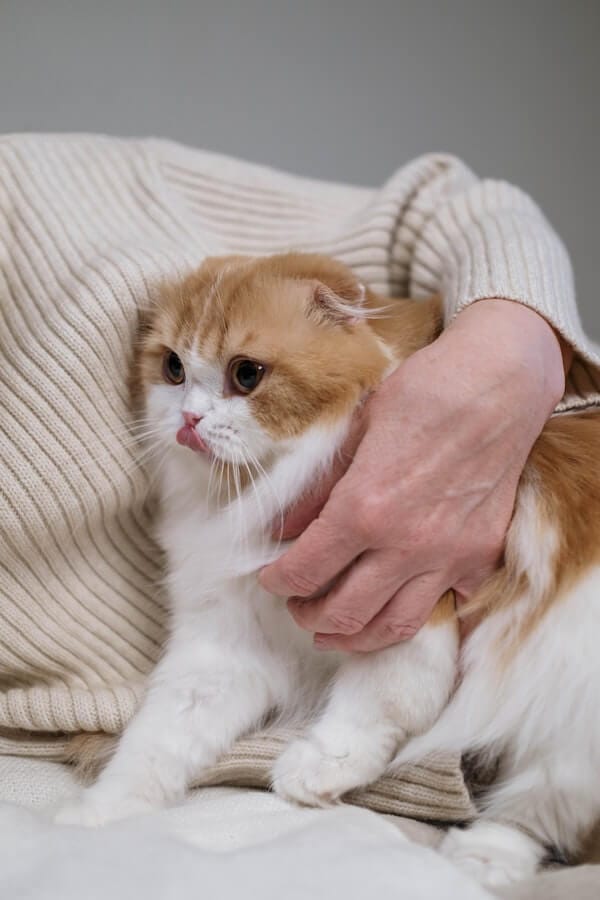
While any breed can become anxious as a result of a traumatic experience or lack of socialization, some breeds are more prone to anxious behavior due to their genetics.
These cats might show certain signs of anxiety as follows:
1. Excessive grooming – anxious cats are always licking and biting their fur to the point of balding or scabbing.
2. Urinating outside the litter box – anxious cats may urinate outside the litter box due to feeling overwhelmed by changes in their environment or routine.
3. Hiding more often than usual – anxious cats may be found under beds, couches, behind furniture, etc., all day long rather than exploring their environment as they normally would.
4. Loss of appetite – anxious cats may become picky eaters when experiencing a heightened state of anxiety due to changes in their environment or routine.
5. Pacing back and forth – anxious cats often display repetitive behaviors such as pacing up and down the same path over and over again without any purpose other than the anxious need to be in motion.
6. Excessive scratching – anxious cats may start scratching furniture, doors, and other objects out of nervousness or frustration.
7. Shyness around strangers – anxious cats may hide whenever someone unfamiliar enters their space and not come out until they feel comfortable in the presence of a stranger.
8. Overly clingy behavior – anxious cats often try to stay close to their owners, following them around and wanting to be petted constantly as if seeking reassurance that all is well. These are often termed as velcro cats as they follow their owners around all the time.
Top 10 anxious cat breeds
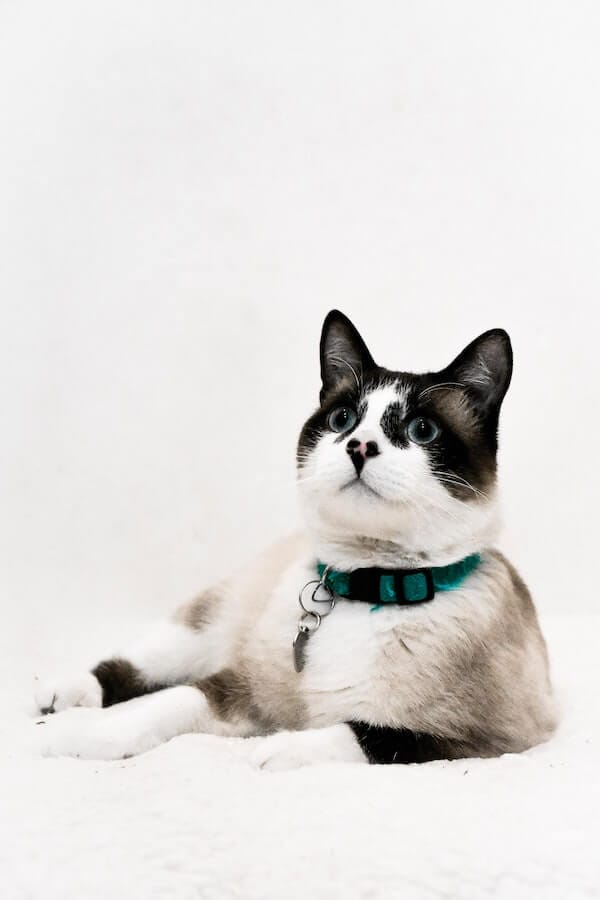
If you thought anxious cats only came in one breed, think again! There are actually ten anxious cat breeds that could be turning your home into a furry bundle of stress.
From the mellow Siamese to the always-alert Abyssinian, anxious cats come in a wide variety of shapes and sizes.
Here’s what is behind the anxiousness in each of these top 10 anxious cat breeds:
1. Siamese
This breed is known for its mellow nature and gentle demeanor, but it can still become anxious when left alone or in new situations.
2. Abyssinian
These cats are alert and curious by nature, and they love being part of the action even if it means being anxious at times.
3. Ragdoll
Raggies can become anxious when not given enough affection or attention, so make sure you’re giving them plenty of love and cuddles!
4. Bengal
Bengals are highly intelligent cats that need plenty of stimulation—otherwise, they may start to get anxious and bored.
5. Maine Coon
While these cats are known for their laid-back personalities, if left alone for too long they can start to feel anxious and lonely.
6. Persian
Persians are sensitive creatures by nature, which means it doesn’t take much for them to become anxious in unfamiliar surroundings or around strangers.
7. Sphynx
These hairless cats can become anxious if not given enough warmth and affection, so make sure you’re giving them lots of love and attention!
8. British Shorthair
This breed is known for its relaxed nature, but it can still become anxious when in unfamiliar settings or around strangers.
9. Birman
Like many other breeds, Birmans can become anxious if left alone for too long or if placed in a new environment.
10. American Shorthair
These cats may seem laid-back, but they can start to feel anxious if taken out of their comfort zone or introduced to something new—so take your time when introducing them to anything new!
What triggers cat anxiety?
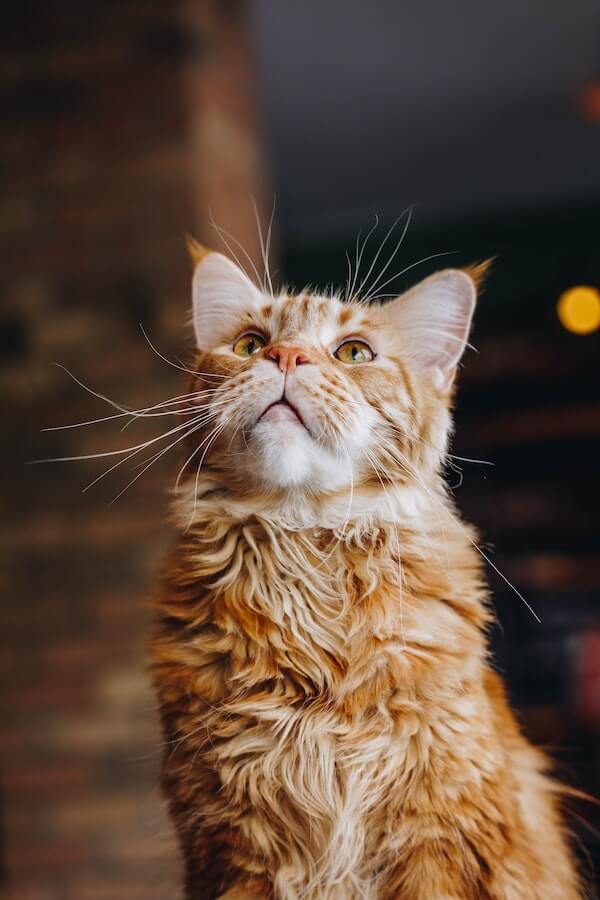
No matter what breed of cat you have, anxious cats are all too common these days. So, what triggers their anxiousness?
Well, there’s no single answer as anxiety can be caused by a variety of different things. Here are five potential triggers to look out for if you have an anxious kitty:
1. Fear – Cats may experience fear in response to loud noises or unfamiliar people and situations. Breeds like Siamese and other highly sensitive breeds tend to be more anxious than others.
2. Stress – Too much stress can cause anxious behavior in cats just like it does in humans! Factors such as changes in routine, being left alone for long periods of time, or the introduction of new pets into the household can be the cause of anxiety.
3. Lack of Stimulation – Cats need an environment where they feel safe and secure and have plenty of stimulating activities to keep them occupied. If a cat’s boredom threshold is exceeded, anxious behavior may result.
4. Separation Anxiety – Cats that are excessively bonded to their owner or don’t receive enough attention can suffer from separation anxiety. This can happen when left alone for long periods of time or the owner leaves the house for extended periods of time.
5. Illness – An anxious disposition can also be a sign of underlying medical conditions such as pain, hunger, or dehydration. If your cat displays anxious behavior, it’s important to take them to the vet for a checkup.
Finally, anxious cats can be managed with a combination of environmental enrichment, desensitization, and medical treatment.
With the right care and attention, anxious cats can still have happy and healthy life!
How do you calm an anxious cat?
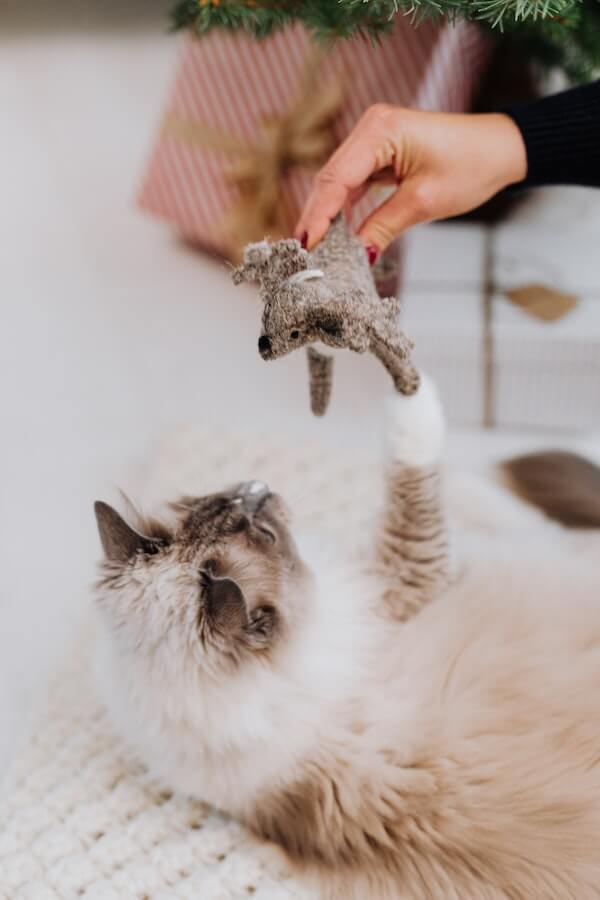
There are a few ways to calm down anxious cats. They are as follows:
1. Understand anxious cat breeds
Knowing which anxious cats to look out for will help you better prepare for the task at hand.
Popular anxious breeds can include Siamese cats, Bengal cats, and Burmese cats.
It’s important to recognize anxious behaviors in these breeds as they may need extra help calming down and feeling secure.
2. Create a comfortable environment
Making sure your anxious cat has its own safe spot that is free from interruptions can be very beneficial.
Certain areas of the house or apartment could be blocked off if necessary so that it feels like its own private area where it can relax and feel secure without any pressure to perform.
Creating a hideaway with soft materials like blankets and pillows can also help anxious cats feel more at ease.
3. Speak softly and slowly
Keeping your voice quiet, calm, and low can signal to an anxious cat that you are not a threat.
Speaking slowly can also help anxious cats adjust to new environments or people as they won’t be overwhelmed by the rapid speed of human speech which can increase anxious behaviors.
4. Keep your distance
Anxious cats will need their own space until they become comfortable enough with you to come over for cuddles or pets.
Giving anxious cats this time allows them to get used to your presence in small increments, making them more likely to approach you on their own terms when they’re ready.
5. Provide treats and interactive toys
An anxious cat’s diet should include treats as rewards whenever they do something good or come to you on their own.
This will help them learn that humans can be a source of positive reinforcement, not just fear.
Interactive and DIY toys like puzzle feeders or scratching posts can also provide anxious cats with mental stimulation.
Conclusion
Anxious cats can be difficult to manage and require extra attention, understanding, and care. However, with the right approach anxious cats can still lead a happy life.
By understanding anxious cat breeds and providing them with a safe environment to relax in as well as treats, interactive toys, and slow-speaking calm humans; anxious cats are able to relax and feel secure.
With the right management anxious cats will be sure to feel more comfortable over time. So if your cat is showing signs of anxiousness remember that it’s possible to help them overcome it!


GIPHY App Key not set. Please check settings